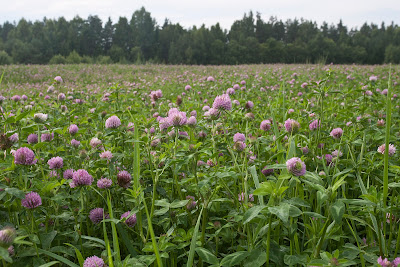CAP as usual – killing HNV agriculture.
A beef farmer whom I
know well informed me recently that he is facing penalties for
claiming support on “ineligible” land. It is like deja-vu from
2006 that has also all too often repeated itself. The farmer in
question is taking care of large coastal pastures – semi-natural
habitats of high nature value. On his pastures some small patches
have little juniper bushes. Let me be clear: it is not about GAEC or
sufficient management. It is about “eligibility”: these small
patches, integral part of his pastures that are not easy to
distinguish from the remaining “eligible” meadow-land, are
threatening him with severe penalty due to non compliance with
“eligibility criteria”.
Looking at the
official responsible for the on the spot check going with GPS around
the small patches with tiny juniper bushes would have been hilarious
if it would not be disgusting. The very real threat of withdrawal of
“undue payments” is handicapping the High Nature Value farming –
here and now, and in many other cases and places.
I am sick and tired
of the endless irresponsibility game between the EU and national
authorities, between “the problem lies with national
implementation” and “it is the EU rules”. Having spent enough –
much more than I would like – time reading both the EU regulations,
and national legal texts and plans I know for sure: both parties are
to blame. It is however the farmers who have to bear the burden.
CAP is often
presented as necessary to maintain the “European agricultural
model”, which implies also protection of HNV farming. The reality
however is that HNV farming is discriminated by CAP payments all the
time. Current CAP is not part of the solution, it is part of the
problem. It must be radically reformed – or scrapped altogether.
Author: Aleksei Lotman



Comments
Post a Comment